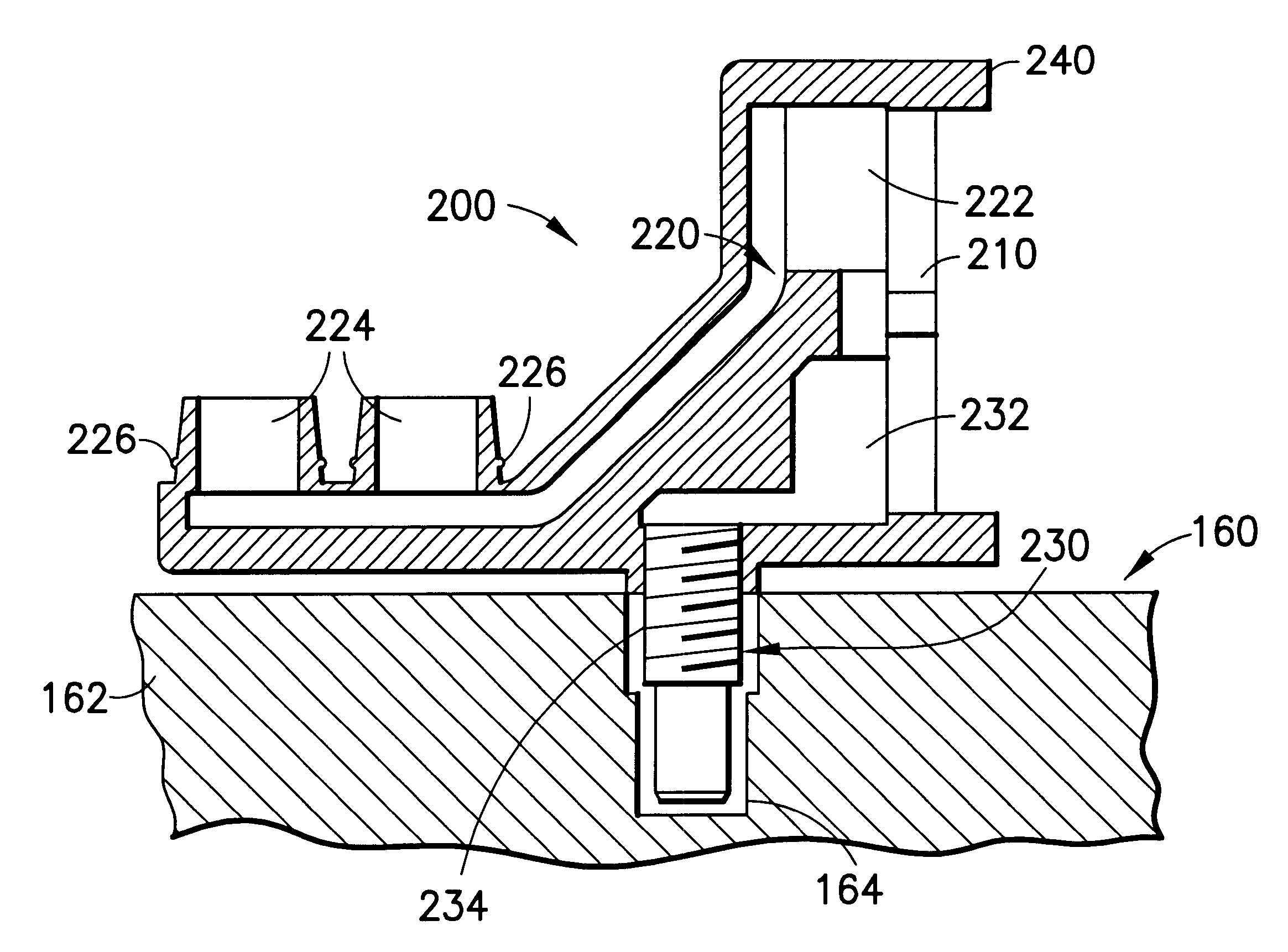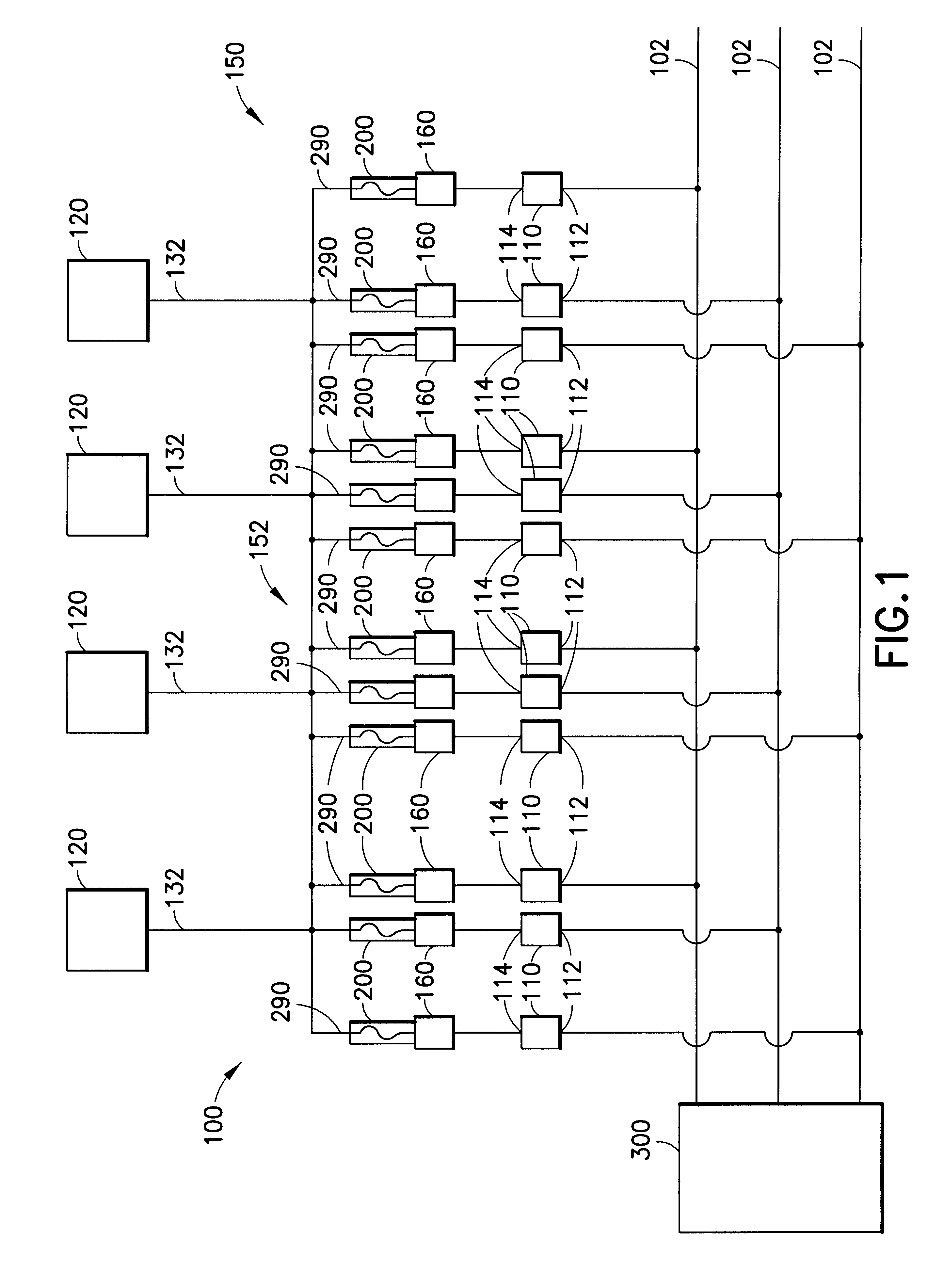Fused terminal for use with a network protector
a network protector and fuse terminal technology, applied in the direction of overvoltage protection resistors, emergency protective arrangements for limiting excess voltage/current, and arrangements responsive to excess voltage, etc., can solve the problem of affecting the service life of the customer, and affecting the service life of the primary feeder
- Summary
- Abstract
- Description
- Claims
- Application Information
AI Technical Summary
Problems solved by technology
Method used
Image
Examples
Embodiment Construction
The present invention is directed to a terminal for a network protector that includes an integral fuse and that may be located outside of the network protector housing.
Referring now to the drawings in detail, FIG. 1 schematically depicts an electrical network 100 including a plurality of high-voltage primary feeder cables 102 connected to a utility company 300 that generates and provides power to the plurality of feeder cables 102. The electrical network 100 also includes a secondary-side network 150 that provides power to a plurality of utility customers 120. The secondary-side network 150 includes a plurality of low-voltage feeder cables 132 that run from a grid 152 directly to the customers 120.
Various devices are provided to interface between the feeder cables 102 and secondary-side network 150. A step-down transformer 110 is provided to step-down the high-voltage being carried on the primary feeder cables 102 to a voltage that may be used directly by the customers 120. For exam...
PUM
 Login to View More
Login to View More Abstract
Description
Claims
Application Information
 Login to View More
Login to View More - R&D
- Intellectual Property
- Life Sciences
- Materials
- Tech Scout
- Unparalleled Data Quality
- Higher Quality Content
- 60% Fewer Hallucinations
Browse by: Latest US Patents, China's latest patents, Technical Efficacy Thesaurus, Application Domain, Technology Topic, Popular Technical Reports.
© 2025 PatSnap. All rights reserved.Legal|Privacy policy|Modern Slavery Act Transparency Statement|Sitemap|About US| Contact US: help@patsnap.com



